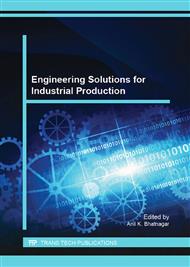p.23
p.28
p.34
p.39
p.44
p.50
p.54
p.59
p.68
Study on Energy Saving of the Air-Conditioning Exhaust Heat Recovery System in Office Buildings
Abstract:
The study analyzed the thermal performance of a sensible heat recovery system in an office building in Beijing area. Based on proposing the basic evaluation index of the thermal performance, the study analyzed the effect of outdoor temperature and wind speed on the heat recovery efficiency and the reduction of fresh air load. The analysis results show that, the operation effect of the sensible heat recovery device in winter is better. In winter, the sensible heat efficiency η is higher than 60%, the system has higher EER, and the fresh air load can be reduced more than 50%. While the sensible heat efficiency η is lower than 60% in most time in summer. And in a hot, humid climate, the recovery effect of sensible heat recovery device is significantly reduced.
Info:
Periodical:
Pages:
44-49
Citation:
Online since:
July 2015
Authors:
Price:
Сopyright:
© 2015 Trans Tech Publications Ltd. All Rights Reserved
Share:
Citation:


